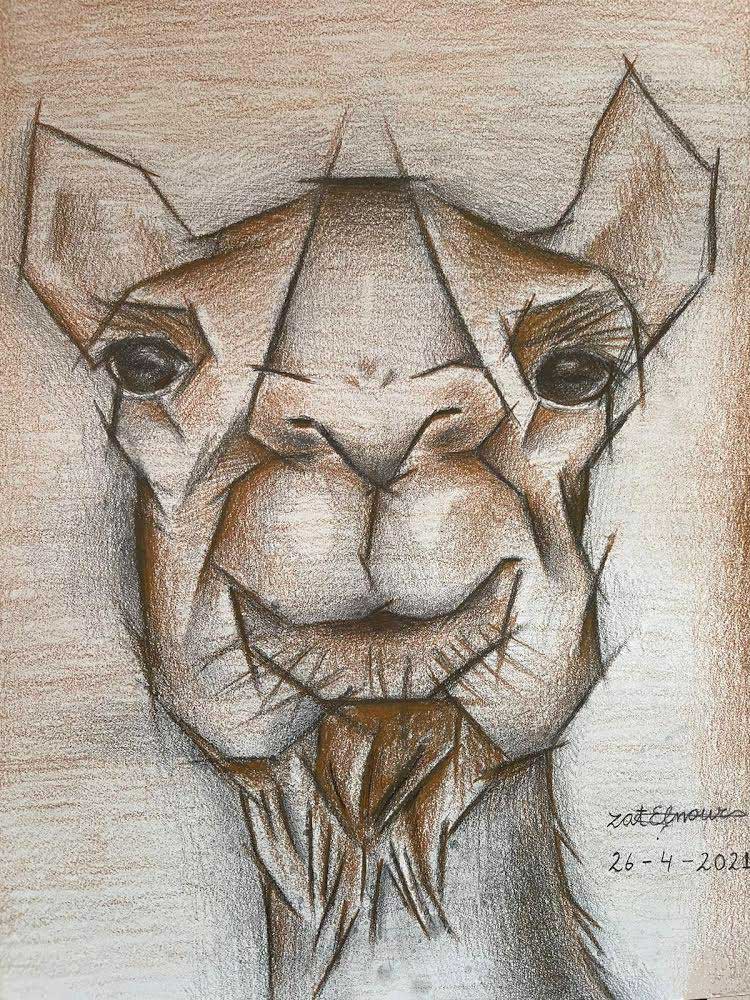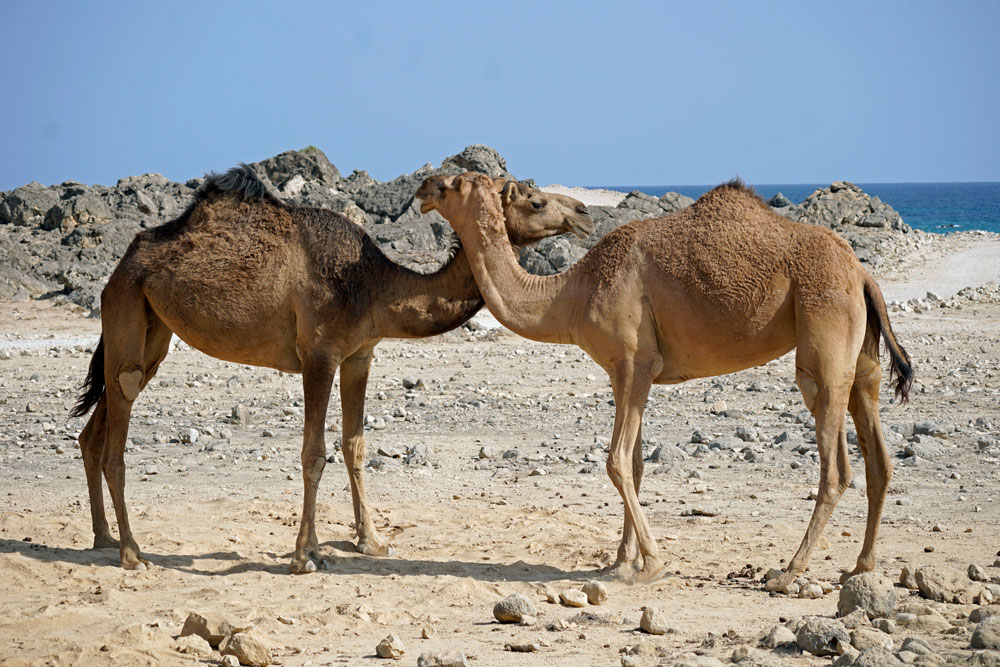An Arabian Fairy Tale, source: Mirbat Castle[1]
Retold by Joke Koppius and Greg Suffanti

One day while crossing the savanna, a camel saw an ant carrying an enormous load across the steppe.
The tiny creature was carrying a big twig, easily ten times bigger than herself.
The camel stood a long time studying the busy ant, then said:
“The more I watch you the more I admire you. You carry on your shoulders a load ten times bigger than yourself, and all as if it were nothing.
I only carry bags for others, and yet my knees often buckle.
Why is that?”
The ant paused for a moment, putting down her heavy load, then replied:
“It’s really quite simple. I only work for myself, while you only work for others. ”
She then put the twig back on her shoulders and went happily on her way.
Storytelling traditions in Oman
Fairy tales are normally considered the heritage of children’s literature, and are a cross-cultural narrative genre as they present universal values and important lessons. It is now widely accepted that this oral storytelling tradition vastly predates preliterate societies, probably going back to the Bronze Age, some five thousand years ago.
Among the educational properties of the fairy tale, nowadays it is said that they sensitize childrens’ mind towards the values and customs of other, and multi-ethnic societies. Further, through the narrative play between both the similarities and the differences of the reader’s own background, the child has the ability to connect their imaginary world to different cultures, environments and far away characters.
Often indistinguishable from myths, fairy tales and folk tales have always had the function of spreading the values of a community and its rules of conduct; and Oman is no exception.
Storytelling is an historically essential component of Omani family life — usually a large family — which is orally transmitted through the generations by the elders of the community.
Particularly during special festivities, children gather in a circle around one of the grandparents, excitedly awaiting for the story to begin, introduced by the magic phrase:
“There was and there wasn’t … in the past and in recent times …”
Popular, traditional tales are intrinsically bound to the history, culture and social life of the regions. Therefore, in addition to being an entertaining pastime, they promote the child’s growth through the transmission of values and norms, while engendering the feelings of belonging, and giving form to their perceptions of community.
These stories always have an educational and moral message to teach.
The Heritage of Dhofar

Many of the folkloric tales of Dhofar belong to the Jibbali (people of the mountains). The two most widely known characters are Bo Zid (Abu Zayd) — the portrait of a perfect knight — and Ba Nwas (Abu Nawas) — a narrative about a tricky figure who disregards convention.
Virtues such as perseverance, forbearance and endurance are particularly exalted in Jibbali lore, as is the ability to avoid and resolve problems through one’s own cleverness.
Dhofari stories tell about poor people who become rich — The Poor Logger —, princesses — The Prince and the Intelligent Maiden —, courageous and patient mothers — Mother Charity — and evil step-mothers — Princess Salma — a sort of Dhofari version of Cinderella.
Elements of magic are also present in the story of Genies (Djinn[2]), as are talking animals — The Genie Bride, The Magic Ring and The Sly Fox.
Fairy tales — such as Smart People and The Courageous Man — are among the best known in Dhofar, incorporating the traditional narrative element of a common man possessed with superior strength or intelligence.
Notes
[1] ‘The Camel and the Ant’ is one of the Islamic fairy tales showing that no matter how small or large animals are they are all important to God and need to be cared for.
[2] “Djinn or jinn are creatures invisible to humans created by Allah the Most High of smokeless fire (see aayah 15:27 and 55:15), like people of earth (see a.o. aayah 3:59) and angels of light. Jinn are creatures with their own will and also have to choose between good and evil. Among the jinn there are also Muslims, Christians, Jews and unbelievers etc. One can make contact with the jinn by means of black magic, turning a glass, ouija board, commuting, etc., which is haraam (forbidden) in Islam. It is very dangerous to summon jinn because you do not know whether you are going to be dealing with good / honest or bad / lying jinn. Evil jinn will do their best to harm humans by inviting them to disbelief, pursuing them, triggering fear attacks, etc. and even making them commit suicide.” Retrieved May 25, 2021 from https://uwkeuze.net/de-wereld-van-de-djinn/ Bekx, Abdoellaah. De wereld van de djinn (www.islamqa.info).
